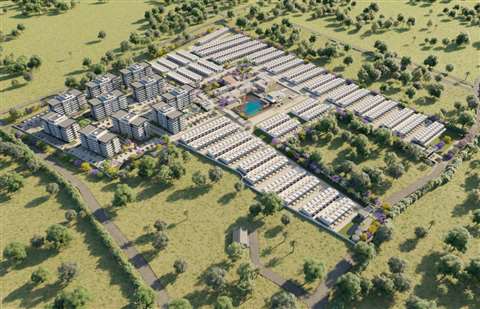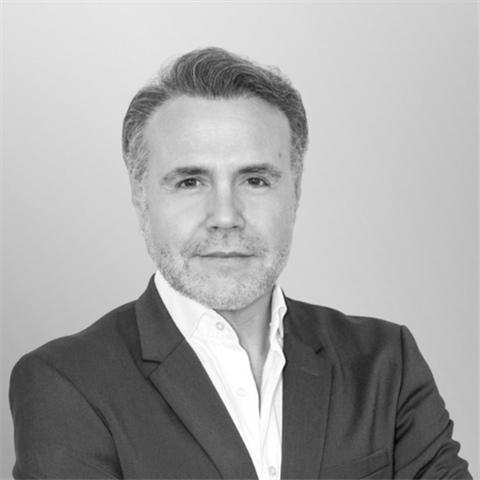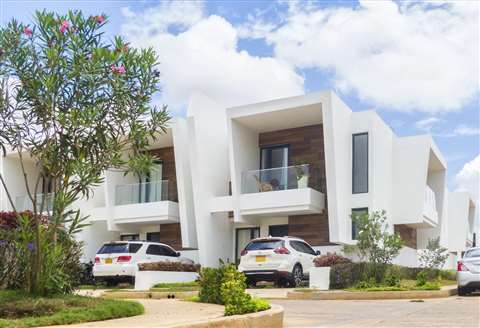Online exclusive: how to build sustainable ecocities
05 April 2023
Gregorio Esteban, founder and CEO of Miraval Holdings, a sustainable developer of self-sufficient ecocities in Latin America, on how construction can build ecocities
What makes a building ‘eco’?
 When considering what makes a building ‘eco’, it’s important to bear in mind that a building is always part of a wider ecosystem
When considering what makes a building ‘eco’, it’s important to bear in mind that a building is always part of a wider ecosystem
It’s important to bear in mind that a building is always part of a wider ecosystem – we should talk about it in the context of the neighborhood, village, city that surrounds it. Because a building, depending on the use, is always going to be as eco as the environment that it is depending on. As part of that wider system, being eco means having a less negative impact on the environment.
So, it’s not just about the building process, it’s about the whole process: from the concept, land acquisition, the use – residential, office, commercial – to, 50 years later, the impact it’s had: how it has contributed to the ecosystem that it is part of in terms of being environmentally friendly, carbon neutral, having a less negative impact.
This includes the building materials used, the supply chain, the time and the resources used, the type of energy that is used not just for the building to exist but in the construction process, the type of maintenance the building needs, reduction of waste, protecting natural habitats surrounding the developments. It’s a whole process from the moment you are thinking about it to 50-100 years later, if it’s still standing up, what the impact has been.
What are the challenges in creating sustainable developments?
The challenges in Latin America are huge – there is much work to be done. When it comes to sustainability, the priorities are different in Latin America compared to, say, Europe. Because of this, complying with international standards in the region is a huge challenge because those standards do not exist there in the same way.
For example, one of the social impacts of our developments is to create green areas and sports facilities in our ecocities that local communities can access, and healthcare and educational projects for neighbouring communities. While this is a big tick for sustainability in Colombia, where social impact is of greater importance, it would not be relevant in Switzerland.
Then somebody has to provide the financing for the transition to sustainability, which is not cheap. If you take into account inflation, construction costs, high interest rates, more expensive mortgages, the cost of being sustainable in a region where the price tag is everything is a key challenge. People are not willing to pay a single dollar more for a home that is sustainable if they can buy a cheaper home that isn’t. They cannot afford it right now. So who is going to pay for sustainability? All that has to be on the shoulders of the developer.
Ultimately the only way to increase the demand for this sort of product is to deliver it without a higher price. So, if we can cover the needs of the buyer while introducing sustainability and they don’t notice a difference in price, then we can increase interest in these sorts of builds – because there is added value.
How do you ensure that the actual construction process is as sustainable as possible?
 Gregorio Esteban is the founder and CEO of Miraval Holding
Gregorio Esteban is the founder and CEO of Miraval Holding
There are a few areas we have focused on. For example, locating construction materials from the closest source possible and making sure any type of fuel we use is as efficient as it can be, which translates into a decrease in scope 2 emissions in the construction process.
Then there’s the use of off-site building. The main structure needs to be built on site but, where we can, we prepare the rest of the building off site. These are modularized elements, for example walls, kitchens and floors. We have these types of portable facilities close to the sites and then move them into the sites. The concept is known as on-site assembly automation and it is a much more sustainable way of doing things in terms of transport optimisation.
There are also some local metrics and certifications, for example in Colombia there are metrics that relate to carbon footprint and social impact, and we apply these. . We are also in the process of getting international certifications for our developments – LEED, BREEAM – as well as the national ones because of the importance of local urban characteristics.
When it comes to sustainability, we tend to look more closely at the UN’s Sustainable Development Goals than ESG frameworks because, for an emerging market like Latin America, at the moment the adapted and asymmetric ESG metrics are under development.
What are the differences between how ESG is seen in Latin America and, for example, Europe?
The two are very different. It’s simply not possible to integrate ESG, as has been developed in Europe, in the same way in Latin America. The two business environments are not the same and their challenges and nature are different. The focus of construction companies in Latin America is on delivering housing because of the housing deficit, and keeping costs low. As a result there is little ESG integration - as it is perceived in Europe - in the real estate sector there. Buyers aren’t willing to pay extra for the latest European sustainability standards. Local construction norms do not allow the use of the absolute same construction materials and technology that are used by our European peers.
The way ESG is implemented in the real estate industry needs refining - there needs to be flexibility around local particularities, environment, social needs and sector. Plus, different ESG metrics are determined by different rating agencies, banks, governments, which just creates more confusion to small and medium-sized businesses and local institutions. There needs to be internal compliance that looks at where a business is operating and what is necessary there.
 Modular and off-site construction can make a big impact on a project’s sustainability
Modular and off-site construction can make a big impact on a project’s sustainability
What new technologies would you like to see implemented to help increase sustainability?
Technologies related to the supply chain carbon footprint, because although this is something that is not usually tackled by small local companies from the construction ecosystem, the supply chain is a big part of the carbon footprint. Implementation of new technologies to help improve the skills of the labour force.
The way the sector is mainly going to change is via off-site building. Most things that comprise a building can be produced off-site and then later be taken to the site – making logistics, planning and time management easier. This will also help reduce the amount of capital and energy spent on workforce, waste management and supply chain. In the end, project managers are going to embrace this new way of construction. It’s very much a factory mentality applied to a construction site, it’s what we’re doing already and it’s the future.
But it’s not only about what we would like to see, it is also what is possible. This is framed by two main things. One is regulations related to construction – you have to adhere to certain regulations in each country. For instance, if you want to use wood as a renewable source for building, for us it cannot be done, because the laws and the regulations for architecture and engineering do not allow us. The second is the availability and suitability of any already readily available construction technology.
We have to adapt every single construction technology to the place that we are building and to the near future, especially considering the already perceived effects of climate change on our environment, which will manifest in several ways depending on the location of our residential and commercial developments. So it’s not necessarily what we want, it’s what we can do right now and what we need for a net-zero future.
Gregorio Esteban is the founder and CEO of Miraval Holdings, a European-based sustainable developer of self-sufficient ecocities in Latin America. He founded the business in 2015 and he is overseeing five ecocity projects in Colombia, all funded by European investors. The company is the first European sustainable real estate developer focused on Latin America.
STAY CONNECTED



Receive the information you need when you need it through our world-leading magazines, newsletters and daily briefings.
CONNECT WITH THE TEAM








